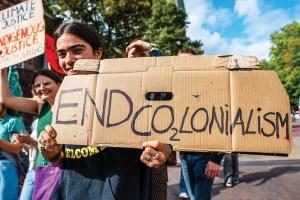The Eden Prairie City Council is interested in attracting million-dollar home-owners. Twelve-miles southwest of Minneapolis, Eden Prairie is a water-blessed environment boasting 17 lakes, 100-plus ponds and several thousand acres of wetlands.
By Susu Jeffrey Original to Rise Up Times May 27, 2021
You’ve heard of redlining, the practice of segregated housing loans begun in the 1930s by the Home Owners’ Loan Corporation. Red for undesirable, refusing loans to “minorities” for the purchase or improvement of residential property in certain locations. Slums or ghettos developed for those people.
Redlining isn’t Jim Crow, the legal practice of denying voting or educational rights or economic security to blacks from the 1870s on. Redlining is unwritten law—it just is.
In the color-coded housing world yellow denotes a declining neighborhood, blue nice with good schools and green for the crème locations with names like Kenwood or Oakwood, even cemeteries called Lakewood or Woodlawn. From birth through death trees indicate safer environs with clean air, less crime, more space, wealth.
456 Heritage Trees
The Eden Prairie City Council is interested in attracting million-dollar home-owners. Twelve-miles southwest of Minneapolis, Eden Prairie is a water-blessed environment boasting 17 lakes, 100-plus ponds and several thousand acres of wetlands.
Last Permit Before Construction
The last chance to warn watershed deciders against permitting a Spring Road upscale ridge-top homes project in Eden Prairie is coming up. See details at the end of this article.
It is a landslide-prone area having been laid down by glacial melt from the ancient River Warren. Loosely packed ridges along the Minnesota River are riddled with water veins and arteries flowing toward the 5-mile-wide riverbed. Tree roots hold these fragile hillsides in place.
About 66,000 people live in Eden Prairie, nearly 40 percent hold a college degree. Since the year 2000 the white population has decreased from 91 to 76 percent, the Asian population increased from 5 to 12 percent, and the black population increased from 2 to 8 percent.
At the May 4, Eden Prairie City Council meeting the mayor and four council members unanimously voted down an independent Environmental Assessment Worksheet while voting for a zoning change from “rural” to “residential.” The steep land in question is 28-acres of wooded and farmland scheduled for development of fifty 3-garage homes.
Among suggestions rejected were standard electric vehicle (EV) outlets in garages and expanded first floor powder rooms that would allow space for a shower for aging individuals who wish to remain in their homes living on one floor. Exactly 456 “heritage” (irreplaceable) trees would be cut. “Trees grow back,” opined the deciders.
Class Envy
During the 5-hour council meeting at least 65 environmentalists spoke in opposition to the exurban development situated above an historic spring water collection site. Since 1890 Eden Prairie citizens have opened the Fredrick-Miller Spring free, to the public.
Outraged by the “affordable homes” suggestions from various speakers, Councilman Mark Freiberg accused the Friends of Frederick-Miller Spring of “class envy.” Freiberg has a 30-year background in real estate and home finance.
“You can’t build an affordable home on a $200,000 lot,” Mayor Ron Case said. The mayor was an Eden Prairie school teacher for 33 years, he holds a PhD in “leadership” and currently works in financial effectiveness in the health care industry. In 2010 he lost his race for a state senate seat to a Republican incumbent. Case has served on the City Council since 1996.
“We don’t approve projects to improve tax base,” the mayor said. “We manage development.” Single family homes run from $300,000 to $1.5-million. Prices are “determined by the market….We can do apartments.”
“I’m going to go out on a limb here,” Case continued, “Eden Prairie, Minnetonka, Hopkins, Edina will probably almost never again build an affordable home.”
To sweeten the zoning change from rural to residential Pulte Homes, with its checkered reputation, offers to donate eight wooded acres to the City of Eden
Prairie. The “Noble Hill” development is planned on former farmland, in this case a tree farm, a Christmas tree farm with thousands of trees with roots holding the soil on the hillside in place and absorbing rainfall.
This Eden Prairie topographic map shows Riley Creek where it crosses Spring Road, the site of the Fredrick-Miller Spring water collection pipe and parking lot. Further uphill on Spring Road is where the proposed 50 Pulte, 3-garage Noble Hill home development is scheduled to be constructed.
The source of Fredrick-Miller Spring water is on the west (left) side of Spring Road. The water is piped under the road and spews out by the force of downhill gravity.
Spring Road dead ends at Flying Cloud Drive (Route 61) at the marshy bottomlands of the Minnesota River with left-over lakes from glacial melt. Notice the 10-foot contour lines on the map indicating the steepness of the terrain.
Pulte announced plans to pipe storm water from the 20-acre construction area off-site to the south and east. Whether to temporary ponds or into the donated 8-wooded acres, in saturated soil gravity will send the water downslope into already impaired Riley Creek. Riley Creek a generation ago was a trout stream.
With a nod to the large audience of environmentalists at the council meeting Case spoke about increasing the number of spigots at the Fredrick-Miller Spring directly downhill from the 50 planned homes. With the same amount of water pressure, multiplying one spring water outflow to five would cut the velocity substantially.
Now it takes a couple of seconds to fill a gallon water jug. If it took four or five times as long to fill a water container the Spring Road turnout would need more parking spaces. “We’ll put a canopy on it,” Mayor Case enthused.
Privatizing the commons is an old tactic to rid the countryside of the hoi polloi. In England the 1801 Enclosure Act led to increased property values and decreased population. There was a huge migration from the old country to America where the immigrants did to Native Americans what was done to English peasants in the name of land-owner rights.
“Private property rights, our country was built upon that,” Councilman Freiberg said in his summation. One thing potential owners of the future low-density Pulte housing development would get is the responsibility for upkeep of the lock-block retaining walls that should keep their homes and yards from sliding down the Minnesota River ridge.
Last Permit Before Construction
The last chance to warn watershed deciders against permitting a Spring Road upscale ridge-top homes project in Eden Prairie is coming up. The Riley-Purgatory-Bluff Creek Watershed District will hold a virtual meeting scheduled to vote on the “Noble Hill” 50-home residential Pulte development on Wednesday, June 2, at 7 pm.
The preceding Friday, May 28, the watershed district meeting agenda will be published on their website (https://www.rpbcwd.org/). Citizens wishing to speak for 3-minutes at the start of the meeting can phone Amy Bakkum, watershed district office administrator, at 952-607-6026 to get on the roster. At the 3-minute time limit speakers will be cut off without exception although Pulte developer spokesmen will be permitted more time.
Statistical analyses of longer, wetter rain events expected with climate change in southern Minnesota is still hypothesis rather than established fact. Rain patterns have been running extremely dry followed by longer, wetter rains. When hard rains fall on desiccated soil there is a lot of runoff and erosion before the rain water begins to be absorbed.
In this Minnesota River steep, landslide-prone area mud and sand-slides have closed roads and bike paths. Rebuilding a fallen land wall is challenging, time-consuming and expensive.
—Susu Jeffrey
Landslide Inventory map MN Dept of Natural Resources.
Click the above link to go to page 12, figure 5 Landslide Inventory state map with the little green dots.
Featured Image: Fredrick-Miller Spring water in Eden Prairie pouring down from the hillside Minnesota River ridge created by the last glacier. In the background are water protectors from FredrickMillerSpringFriends.org.


